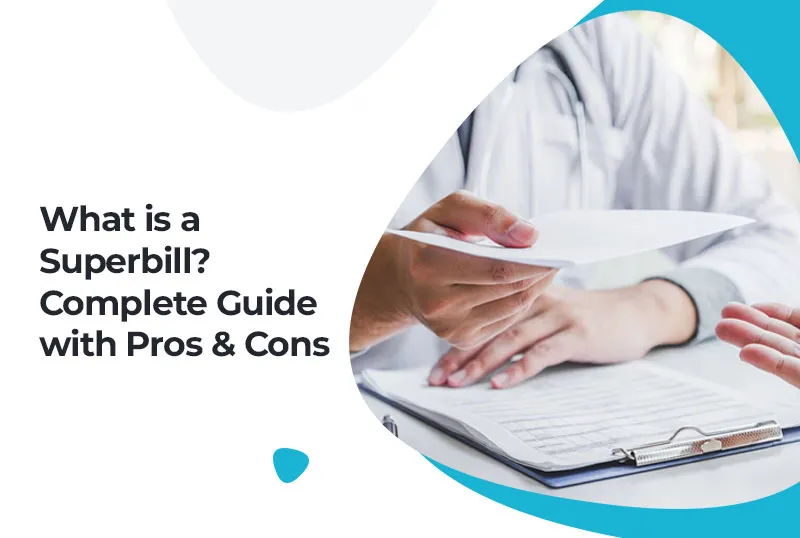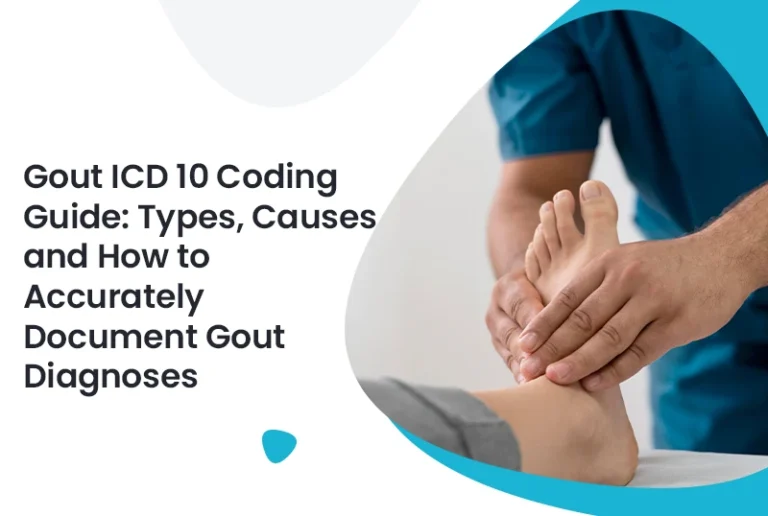Healthcare practices ensure that patients get reimbursed for out-of-network services, and they take the help of Superbill. Superbills detail the services a healthcare provider offers during each visit. This allows patients to get reimbursements from insurance providers after paying the treatment upfront. Meanwhile, superbills provide an effective way for healthcare providers and practitioners to collect payments from patients while allowing them to get reimbursed by their insurance companies.
Let’s discuss what a superbill is, how it works, and why it can be an effective tool in medical billing services for your healthcare practice.
What is a Superbill?
A superbill is a detailed invoice for the services a patient could get during his visit to a healthcare provider. This invoice proves that the patient has paid for the treatment, and it can now be submitted to their insurance companies to claim reimbursements. Unlike CMS 1500 forms, which doctors directly submit, superbills allow patients to claim reimbursements themselves.
Some healthcare providers have integrated specialized billing software, allowing patients to submit these superbills electronically, all called e-superbills. This extra step optimizes the experience for the patients, and they can get the reimbursement directly.
Why Do Providers Use Superbills?
Healthcare providers often use superbills in several situations, such as:
1. Out-of-Network Services
Superbills allow you to get paid without waiting on lengthy approval processes, even if you’re not approved or credentialed with a patient’s insurance network.
2. Waiting for Credentialing
You won’t need official approval, as Superbills allows you to get your treatments done and ensures you get paid for the services.
3. Bypassing Insurance Hassles
Healthcare practices can find the reimbursement process time-consuming, requiring detailed paperwork and approval. However, you can collect payment directly from your patients with super bills.
In short, superbills provide an alternative payment method for providers who are either not on the insurance panel or want to avoid the time-consuming process of credentialing and insurance claims altogether.
Who is Responsible for Creating and Submitting a Superbill?
Healthcare providers generate superbills after each treatment session. This patient is recorded with all the services provided. The provider creates the document (superbill) with detailed services to get the reimbursement amount, which the patient can submit to their insurance company.
However, some providers have optimized the process by allowing patients to submit the superbills electronically through a billing portal. This improves the patient experience and increases faster reimbursement.
The Components of a Superbill
A superbill is a document that details every aspect of the patient-provider interaction. Here’s what it includes:
1. Provider Information
This section lists important details such as your name, NPI number, office location, phone number, email, and signature. If another provider referred the patient to you, their information is also included.
2. Patient Information
The patient’s full name, address, phone number, date of birth, and insurance details are documented. Accurate information ensures that claims go smoothly.
3. Visit Information
The visit information contains diagnostic (ICD-10) and procedure (CPT) codes, the service date, the fee charged, and applicable modifiers. Getting these codes right is essential to avoid claim denials.
Why Superbills Benefit Your Practice
Let’s look at how implementing superbills can impact your practice.
1. Increased Patient Traffic
Patients can choose you for treatment even if you’re out-of-network. This allows for a wider reach by letting patients know they can submit a claim for reimbursement, and more patients will feel comfortable taking your services.
2. More Affordable Care for Patients
Superbills enable patients to afford services. They usually rely on insurance to cover medical expenses, which allows them to get reimbursed, making your services more accessible.
3. Direct Payment
You can receive payments directly from your patients without waiting weeks or months for reimbursements for the services rendered. This bypasses the insurance company’s slow reimbursement process for quicker payments.
4. Lower Overhead Costs
You won’t need extra staff to manage billing, claims, and follow-ups with insurance payers. This can significantly reduce overhead and allow you to focus more on patient care.
5. Immediate Reimbursement for You
You get paid upfront with superbills, meaning cash flow stays consistent, helping you manage your practice more efficiently.
The Drawbacks of Superbills
As effective as superbills are, there are a couple of challenges to keep in mind:
1. Compliance Requirements
Auditing records can be problematic when patients submit superbills to their insurance companies. Your documentation must meet the insurance company’s medical necessity and compliance standards to avoid any issues.
2. Patient Confusion
Sometimes, patients don’t fully understand what their insurance will reimburse. This might upset them, as they don’t get what they were expecting. However, you can tackle this issue by letting patients know to review their insurance plans.
How to Create a Superbill: Step-by-Step Guide
Here’s a step-by-step guide to creating one:
1. Enter the Diagnosis Code (DX)
This is the primary code indicating the patient’s diagnosis. Make sure to enter the correct ICD-10 code.
2. Include the Place of Service (POS)
Specify where the treatment occurred (e.g., office, home, etc.).
3. Add Patient and Provider Information
Enter the patient’s details and your own. Most billing software allows you to pre-fill this information for returning patients.
4. Include NPI and Tax ID Numbers
Please add your National Provider Identifier (NPI), tax ID, and the referring provider’s details, if applicable.
5. Add Procedure Codes (CPT)
Document the procedures performed using the correct CPT codes. Remember to include the number of units and the total fee.
6. Record Payment Details
Enter the amount the patient paid upfront. Many superbill software platforms automatically calculate the totals for you.
7. Submit Electronically or Hand Over to the Patient
After finalizing the superbill, you can either submit it electronically or give it to the patient for submission.
Go Digital with E-Superbills
Paper superbills can get the job done, but using them in this technologically advanced era may seem a bit odd. However, manual superbills can lead to billing and coding errors, slow workflow, and delays in submissions and payments.
E-superbills can be your solution. They transform the billing process, saving time and optimizing it. With e-superbills, you can easily create, submit, and track superbills electronically, allowing you to focus on providing the best possible patient care.
Conclusion
Superbills are a powerful tool that can transform how you get paid for the services rendered without waiting for weeks or months for reimbursements. This also offers patients the flexibility to seek reimbursement from their insurance companies. Whether you’re dealing with out-of-network patients, waiting for credentialing, or simply tired of insurance approvals, superbills provide a simple, effective solution that benefits you and your patients.
So, why wait? Start using superbills today and experience the freedom of direct payment, lower overhead costs, and happier patients!
Precision Hub: Your Trusted Partner
Precision Hub simplifies medical billing with expert billing and coding services, ensuring accurate coding and timely reimbursements. Managing superbills and medical billing codes like HCPCS and CPT can be complex and time-consuming, especially for small medical practices. At Precision Hub, we help small practices grow by efficiently handling the entire superbill and billing process, ensuring accuracy and increasing revenue cycles.
Ready To Optimize Your Claim Submission Process?
Contact Precision Hub today to learn how our expert medical billing services can optimize your operations and improve your practice’s revenue.







